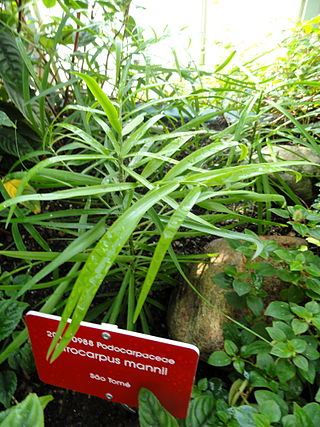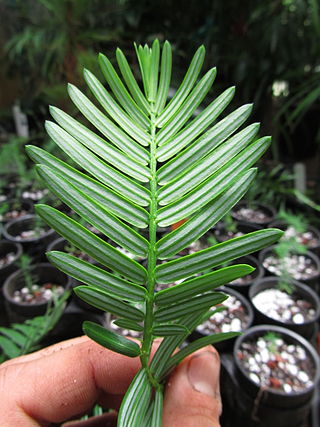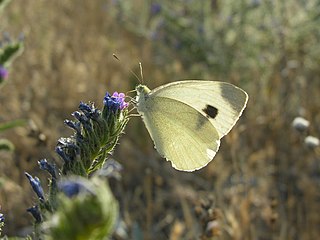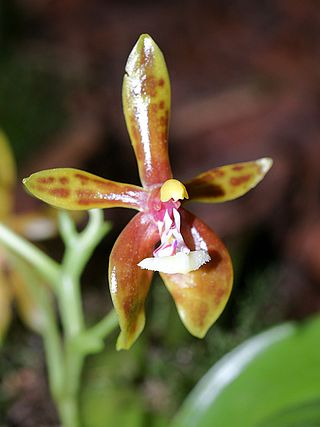
A banana is an elongated, edible fruit – botanically a berry – produced by several kinds of large herbaceous flowering plants in the genus Musa. In some countries, bananas used for cooking may be called "plantains", distinguishing them from dessert bananas. The fruit is variable in size, color, and firmness, but is usually elongated and curved, with soft flesh rich in starch covered with a rind, which may be green, yellow, red, purple, or brown when ripe. The fruits grow upward in clusters near the top of the plant. Almost all modern edible seedless (parthenocarp) bananas come from two wild species – Musa acuminata and Musa balbisiana. The scientific names of most cultivated bananas are Musa acuminata, Musa balbisiana, and Musa × paradisiaca for the hybrid Musa acuminata × M. balbisiana, depending on their genomic constitution. The old scientific name for this hybrid, Musa sapientum, is no longer used.

Mansa Musa was the ninth Mansa of the Mali Empire, which reached its territorial peak during his reign. Musa is known for his wealth and generosity. He has been subject to popular claims that he is the wealthiest person in history, but the extent of his actual wealth is not known with any certainty.
Mūsā ibn ʿImrān is a prominent prophet and messenger of God and is the most frequently mentioned individual in the Quran, with his name being mentioned 136 times and his life being narrated and recounted more than that of any other prophet. He is one of the most important prophets and messengers of Islam.

Egusi also known as agusi, ohue, Ikpan, Ikon, agushi or mbíka) is the name for the protein-rich seeds of certain cucurbitaceous plants, which, after being dried and ground, are used as a major ingredient in West African cuisine.

Musa is one of three genera in the family Musaceae. The genus includes 83 species of flowering plants producing edible bananas and plantains. Though they grow as high as trees, banana and plantain plants are not woody and their apparent "stem" is made up of the bases of the huge leaf stalks. Thus, they are technically gigantic herbaceous plants. Musa species are used as food plants by the larvae of some Lepidoptera species, including the giant leopard moth and other Hypercompe species, including H. albescens, H. eridanus, and H. icasia.

Afrocarpus mannii is an evergreen coniferous tree native to the Afromontane forests of São Tomé Island in the Gulf of Guinea, growing at altitudes of 1,300 m up to the summit at 2,024 m. It was formerly classified as Podocarpus mannii.

Cephalotaxus mannii is a species of plant in the family Taxaceae. It is a tree up to about 20 metres (66 ft) tall, native to southern China, northeast India, Laos, northern Thailand, northern Myanmar and northern Vietnam. While the species is widespread, its populations are fragmented and it is threatened by cutting for timber as well as for using its bark and leaves for medicinal extracts.
Helictotrichon mannii is a species of grass in the family Poaceae. It is found in Cameroon and Equatorial Guinea. Its natural habitat is subtropical or tropical dry lowland grassland.

Gardenia mannii, the nānū, Oahu gardenia or Mann's gardenia, is a species of flowering tree in the coffee family, Rubiaceae, that is endemic to the island of Oʻahu in Hawaiʻi. It inhabits coastal mesic, mixed mesic, and wet forests at elevations of 100–730 m (330–2,400 ft) in the Koʻolau and Waiʻanae Ranges. It is threatened by habitat loss.
Utricularia mannii is a small, perennial, epiphytic carnivorous plant that belongs to the genus Utricularia and is the only member of Utricularia sect. Chelidon. U. mannii is endemic to tropical Africa, particularly the islands in the Gulf of Guinea and the adjacent mainland. It grows as an epiphytic plant on mossy tree trunks in rain forests at altitudes from 500 m (1,640 ft) to 2,100 m (6,890 ft). It has been collected in flower between April and November. It was originally published and described by Daniel Oliver in 1865 and placed in its own section, Chelidon, in 1986 by Peter Taylor.

Cucumeropsis mannii is a species of melon native to tropical Africa west of the East African Rift, where it is grown for food and as a source of oil.

Pieris mannii is a butterfly in the family Pieridae.

Phalaenopsis mannii is a species of orchid found from eastern Nepal to southern Yunnan.

Ahmed Musa is a Nigerian professional footballer who plays as a forward and left winger for Turkish Süper Lig club Sivasspor and the Nigeria national team.
Phlegmariurus mannii, synonym Huperzia mannii, is a species of lycopod, known by the common names Mann's clubmoss and wawaeʻiole. It is endemic to Hawaii, where there are only six populations remaining. It is a federally listed endangered species of the United States.
Poa mannii is a rare species of grass known by the common names Mann's bluegrass and Olokele Gulch bluegrass. It is endemic to Hawaii, where it is limited to the island of Kauai. It is threatened by the loss and modification of its habitat. It is a federally listed endangered species of the United States.

Adscita mannii is a moth of the family Zygaenidae. It is found in Germany, France, Switzerland, Austria, Italy, Spain, Slovenia and the Balkan Peninsula. The range extends to north-western Turkey.

Rauvolfia mannii grows as a shrub or small tree up to 8 metres (26 ft) tall. Its fragrant flowers feature white to pink or red-brown, or yellow corolla lobes. Its habitat is forests from sea level to 2,500 metres (8,200 ft) altitude. The plant has been used as arrow poison. Rauvolfia mannii is native to central Africa.
Anisopus mannii is a perennial herbaceous shrub in the subfamily Asclepiadoideae of the family Apocynaceae — commonly referred to as the dogbane family. The flowering species grows in the tropical environments of central Africa, and is renown in traditional Nigerian medicine for treating sexual impotence, the common cold, diarrhea, and most notably, its potent hypoglycemic effect. Recent research has been conducted, looking in to the species' potential anti-diabetic, anti-inflammatory, analgesic, antimicrobial, and antioxidant bioactivities and mechanisms of action.

Garcinia mannii is a dioecious and evergreen flowering tree in the family Clusiaceae (Guttiferae). The specific epithet (mannii) honors German botanist Gustav Mann.














